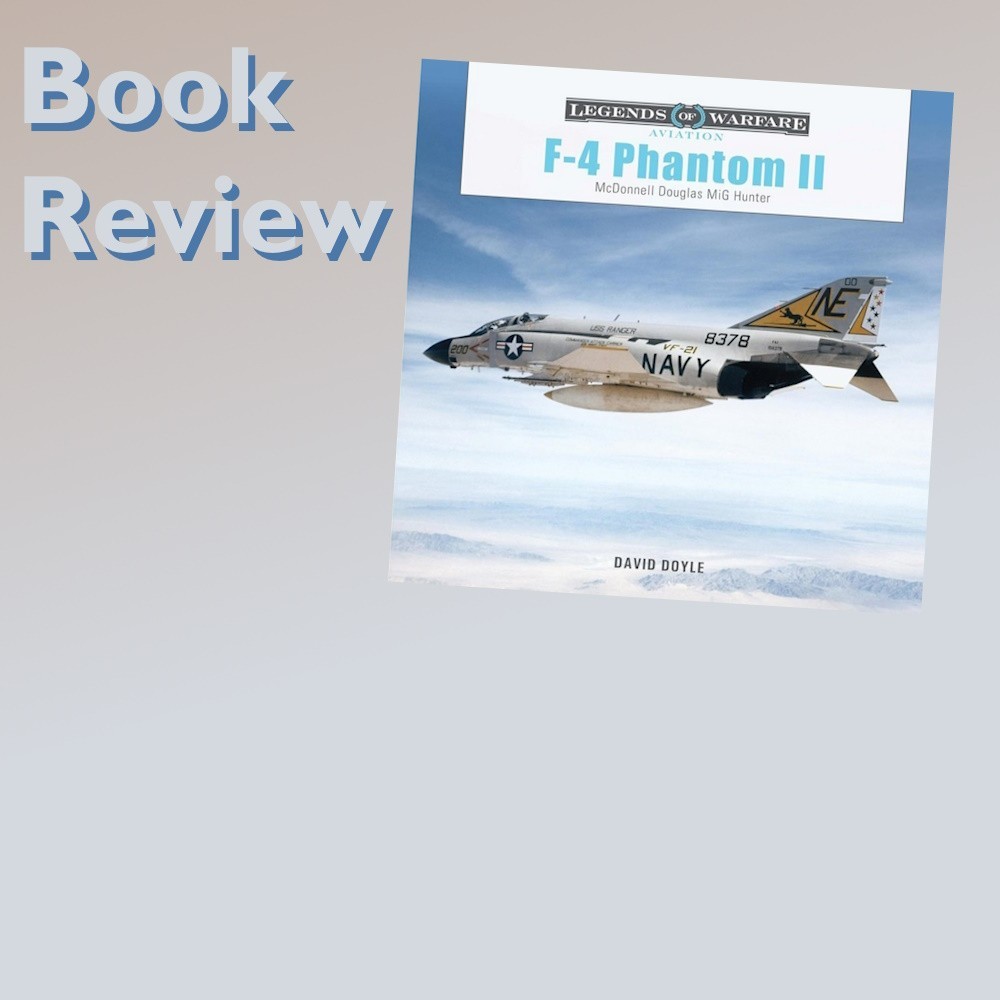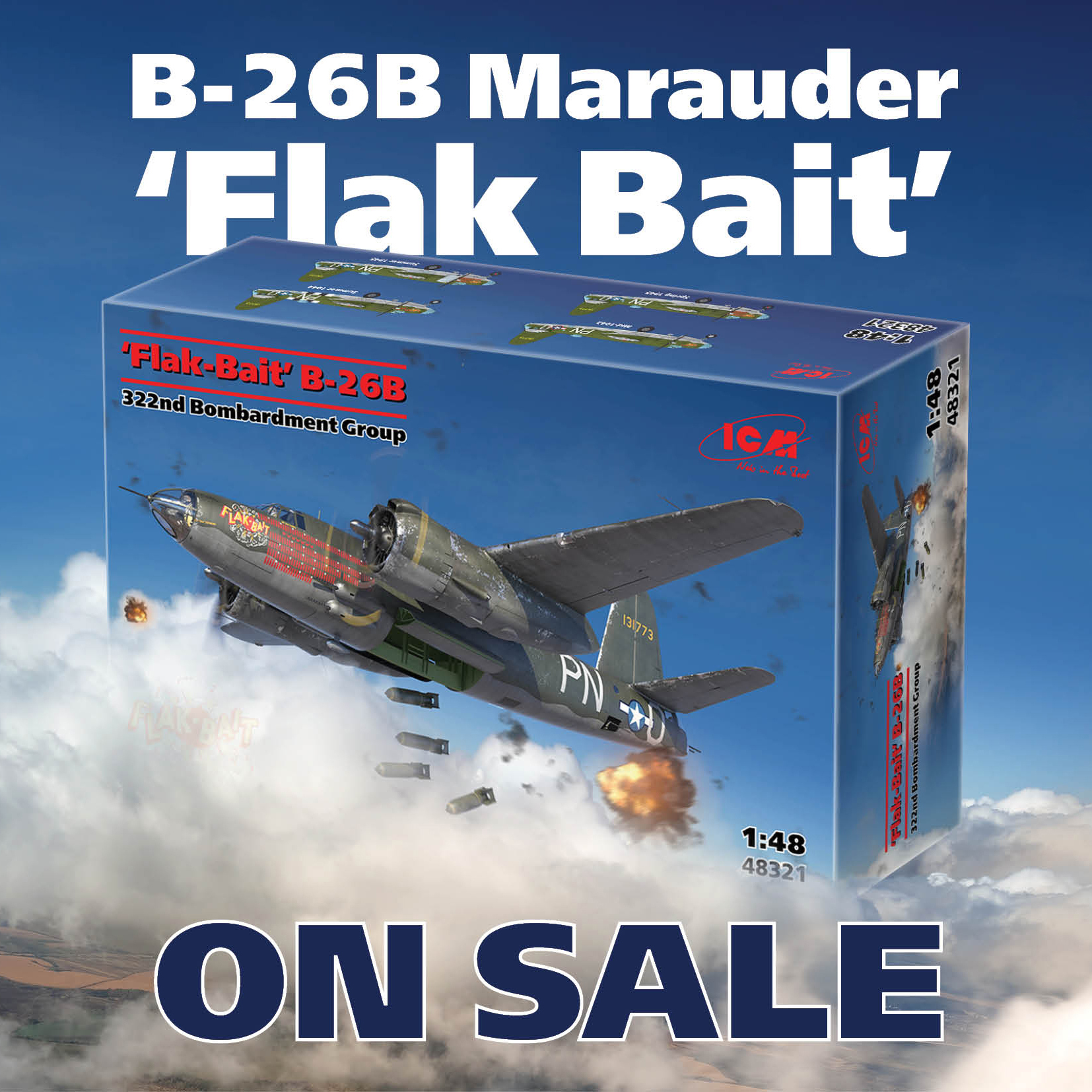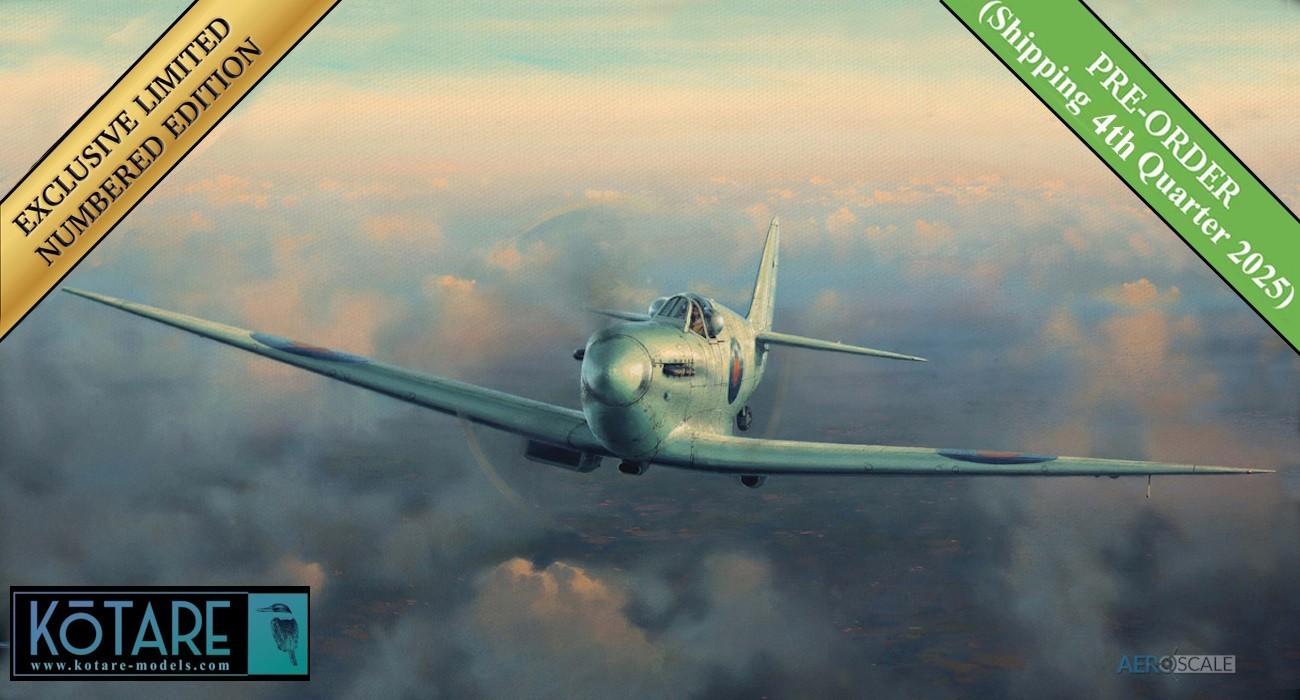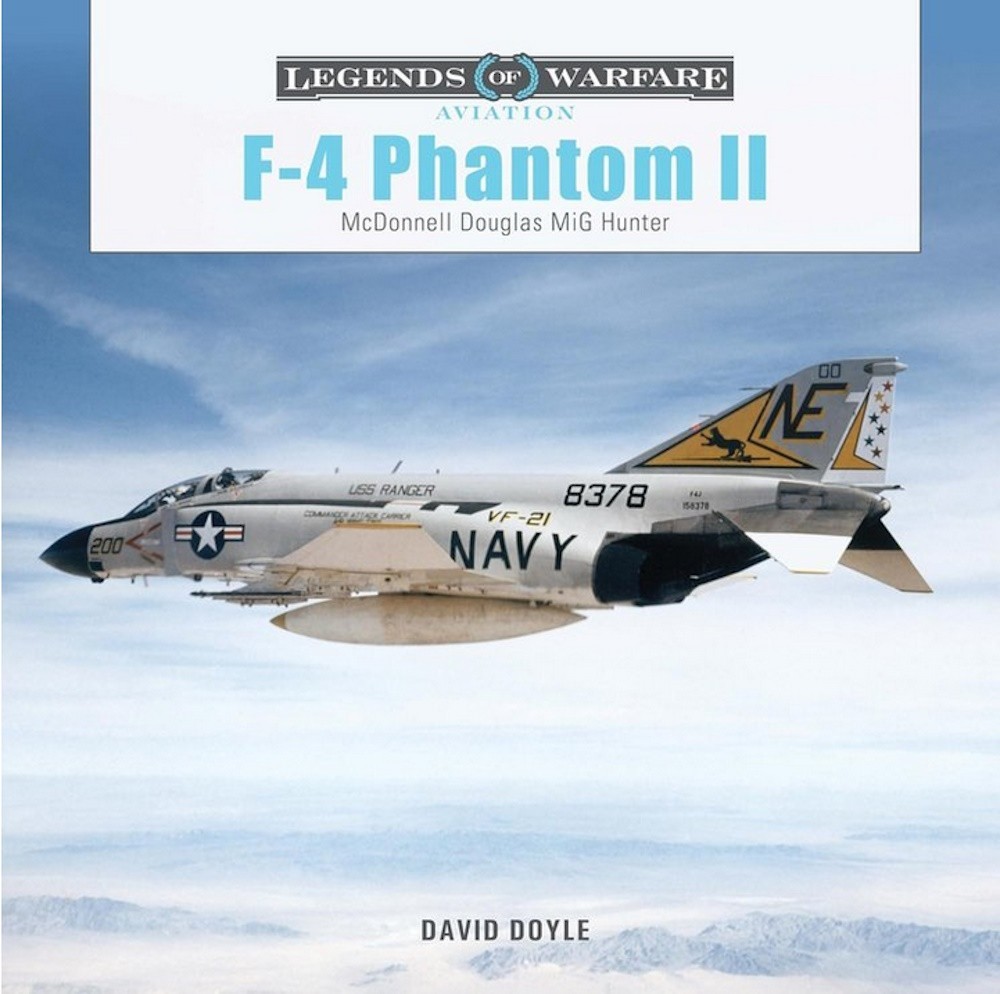
Introduction
F-4 Phantom II, McDonnell Douglas MiG Hunter is a recent title by David Doyle, part of Schiffer Publishing’s series "Legends of Warfare (Aviation)." The series is highly acclaimed by modelers who find valuable source material and inspiration in the text and images. I am particularly impressed with the author's inclusion of what some may consider minutia, although it is important to in-depth research, i.e., contract numbers.
Ah yes, the McDonnell Douglas F-4 Phantom II. Don't confuse it with the other F4s and Phantoms, e.g., the McDonnell FH Phantom, F4B, F4D Skyray, F4F Wildcat or F4U Corsair, but it is okay to be confused by F4H and F-110 because those were the original United States Navy (USN) and United States Air Force (USAF) designations, respectively. (USAF first designated and named the F-4 the F-110 Specter - ah yes, military nomenclature.) I will refer to the title subject as the "F-4". As the "greatest distributor of MiG parts worldwide," the legendary F-4 Phantom II is a favorite of modelers and historians, and this pictorial book chronicles American and ally F-4s from prototype through the F-4G. This hardback book measures 9"x9", features 128 heavy semi-gloss pages, offering 238 color or black-and-white photographs. It is catalogued with ISBN978-0-7643-6902-3. Schiffer Publishing, Ltd. is the publisher and the book is also available at a discount from the author at DavidDoyleBooks.com.
With dozens of models of F-4s available, and new ones being released, this book ought to be welcome new look at the legendary fighter. The genesis of David Doyle Books began while Mr. Doyle was restoring military vehicles, while at the same time working in a hobby shop. Thus, his keen emphasis is on what so many people of those communities value about his work.
Legends of Warfare is a series of books of standard size, layout, and range from 112 to 144 pages in length. They have a clean look to them and thus easy to read and learn from. Whether your interest is modeling, history or restoration, the focus is on the evolution and details of F-4 variants.
The F-4 is a fascinating subject. From the beginning it was intended as a fighter-bomber for the USN. An innovative cutting-edge powerful fighter jet, the design was not traditionally jet-sleek. The big bulky fighter had upward and downward angled flight surfaces, and with two engines, and two crewmen in two cockpits, earned several insensitive nicknames - "double-ugly" is my favorite. Israel named it Kurnass ("Sledgehammer"). Yet, a F-4 pilot told me that in his 20 years of mostly flying F-4s, its pilots thought it was beautiful and derisive nicknames about the Phantom's aesthetics was rarely serious.
Today the F-4 is justifiably celebrated as the era's dominate fighter but it had a dubious start. In an age where dogfighting was considered unlikely, the F-4 was festooned with air-to-air missiles yet lacked an internal gun. As one F-15 MiG-killer said, missiles are called MISS-iles, not "HIT-iles" for a reason; in Vietnam the missiles had a success rate percentage in the teens - the derided F-105 "Lead Sled" Thunderchief killed about 50% more MiGs than did F-4s between 1965-68. F-4 had challenging handling characteristics common with early delta wing jets, and the Air Force (USAF) lost approximately 40% of their F-4Cs in combat 1965-67, several due to departing controlled flight in high-G, high angle-of-attack situations. Its maneuverability was not as good as smaller, lighter MiGs, yet with its massive power it was found to be able to successfully dogfight them if the pilot did not fight the way MiGs fought. The F-4 is also celebrated as an awesome fighter-bomb, able to haul up to 24 bombs, or 16,000 pounds of ordnance, depending on load-outs.
This magnificent machine entered service in 1961 and was retired (as an American combat aircraft) in 1996. It soldiered on longer in aerial target drone missions, Tyndall AFB flying its last QF-4 in 2015, and Holloman AFB later. Your humble reviewer "flew" a F-4 simulator in 1981 and worked a Holloman QF-4 in 2008, and pair of Tyndall QF-4s in 2011, resplendent (at least to me) in a fresh USAF Southeast Asia (SEA) heritage camouflage scheme. What a thrill.
As the author writes:
The McDonnell Douglas F-4 Phantom II first flew in the 1950s, entered US military service in the 1960s, and remained on duty into the 1990s. The plane gained a reputation for tremendous lethality during the Vietnam War and remains one of the most celebrated American fighter designs of the jet age.
This is a visual guide to the type. Chapters are dedicated to each model designation (C, D, E, etc.), including both US Navy and Air Force variants. There are more than 200 photographs, mostly in color, which show the F-4 both in combat and in the details of its interior and exterior design features, markings, and weaponry.
I see modelers and historians widely praise David Doyle Books as "must haves" and "go-to" sources by modelers. I will try to show you why through this book.
Content
F-4 Phantom II, McDonnell Douglas MiG Hunter is organized into 12 chapters:
Introduction
1. F4H-1F/F-4A
2. F4H-1/F-4B
3. F-4G (Navy)
4. F-4J
5. F-4K and F-4M
6. F-4N
7. F-4S
8. USAF and the F-4C
9. RF-4C
10. F-4D
11. F-4E: The Return of the Gunfighter
12. F-4G Wild Weasel
While this book is mainly an visual history, Mr. Doyle provides concise and informative written information, both in the body of the chapters and in the captions. Each chapter provides a concise overview of each version and variant. We learn that the F-4 started as McDonnell Aircraft's model 98B / F3H-G. We learn about the F-4H designation, and when and why it became the and F-4A/F-4B. One detail included in each David Doyle Book I have read is mention of contract and development numbers, and aircraft numbers, i.e., USN bought the first F-4s on contract NOa(s)55-272, that F-4 Bureau Number (BuNo) 143391 was the first in carrier trials on February 15, 1960, and BuNo 145307 saw a redesign of the intake geometry. We also learn that the "F" in F4H-1F identified non-standard engines. Care to know the date of naming the type Phantom? This book provides the date and BuNo of the first airframe to wear the name. Who captured a new world speed record, with what speed, in which airframe, on what day, during what project? A caption provides that information. The book points out changes to the airframe and equipment, designations of systems, e.g., AN/ASA-32 autopilot, Aero-27A ejector rack, KA-55A high-altitude camera, production block numbers.
USN F-4s
F4H-1F/F-4A and F4H-1/F-4B provide 30 pages of detailed text and captivating photographs. With so many test aircraft we find color photos of vivid test and evaluation markings. We learn of the first F-4 combat mission, and first kill, including date, crew, BuNo, etc. Have you ever heard of an F-4 flying under a bridge? Just curious, no reason, just asking for a friend. As we will find is each chapter, plenty of eye candy for super-detail oriented modelers, i.e., inside a RF-4B camera bay.
F-4G (Navy) provides five pages of the F-4G before the F-4G . What does that mean? See F-4G (USAF), below. USN begat their F-4G by stuffing into F-4Bs gizmos similar to SAGE equipment (the black boxes that allowed ground-based USAF Air Defense Command controllers to "fly" F-106s to and from their targets for interception). The author includes BuNos and designations of the radars and data links, modifications to the jet, significant F-4G dates, and squadrons of use.
The remarkable aspect of USN's F-4Gs is their appearance - they wore two shades of green camouflage, and variously colored nose cones.
F-4J covers that important model through 14 pages. A few photos of note are closeups of the extensive service stenciling, and experimental camouflage by aviation artist Keith Ferris.
Two pages of F-4K and F-4M looks at Britain's use of the F-4 and notes the significant differences between US and UK Phantoms.
Twenty-three pages focus upon USN's upgraded F-4s, F-4N and F-4S. These chapters revealed things I did not know about USN F-4s (no surprise there). While there is plenty to learn about spotting cues to differentiate airframes, some performance improvements are particularly surprising. Like elsewhere in the book, we learn of trivia, i.e., the date, time, location, crew, and unit of the last F-4 launch from a USN carrier. These chapters also provide a gallery of different camouflage and markings.
USAF F-4s
Some 30 pages cover the next three subjects. America's Air Corps/Air Force and Naval aviation had decades of humbling by adopting the others' superior designs, with the F-4 being the last pure adopting of a type by the rival service. USAF and the F-4C recounts USAF eating crow and adopting the Navy's F-4. Like the previous chapters we learn of the relevant serial numbers, equipment changes and modifications, dates, unit employments, and weapon differences. Like USN, USAF quickly adopted a reconnaissance F-4 which is presented with seven pages of RF-4C, including six cockpit views.
F-4D was specifically equipped for Tactical Air Command. The chapter also covers the sale of the type to Iran. Some particular mentions are Combat Tree modifications, reworking the armament from the AIM-9 Sidewinder to the AIM-4 Falcon - and back, ejector racks, and optical sights for shooting missiles.
While USN and USAF F-4s were struggling to shoot down MiGs, other fighters were notching up kills. "When you are out of F-8s, you are out of fighters," was the slogan of USN's F-8 Crusader community, "The last of the gunfighters." F-8 was armed with internal cannon. While the F-4 was loaded for bear (Tu-95s) with missiles, what allowed the never intended to be a fighter F-105 to outgun the F-4 in MiG kills was...well, a gun. Installing the M61A1 20mm Vulcan into the F-4 created the F-4E: The Return of the Gunfighter. F-4E saw more modifications than just shoehorning a cannon into the nose and Mr. Doyle covers them, as well as the air-to-air results of adding the cannon.
F-4G Wild Weasel tells the story of the "real" F-4G, USAF's Wild Weasel V. We learn of all of the engineering modifications and equipment that made the penultimate air-to-air F-4 the main surface-to-air (SAM) missile hunter-killer. The chapter notes the addition of munitions from air superiority to SEAD (Suppression of Enemy Air Defenses), although F-4Gs could carry the usual eight air-to-air missiles.
Photographs, Artwork, Graphics
F-4s served a long time and were worked hard. Modelers who love or hate panel lines and preshading will both find vivid photos to support the authenticity and accuracy of their painting techniques. The author chose an exceptional gallery of F-4s. With more than 300 to choose from, the modeler/researcher is bound to find something particularly noteworthy. Some are mentioned above yet these I think are particularly interesting:
1. VF-96 about to fly under the Golden Gate Bridge in 1962.
2, F4H-1 resplendent in test colors hauling two dozen bright red bombs.
3. F-4s with black nose cones and white cones, side by side.
4. VF-21 F-4 with an unusual air-to-air missile loadout.
5. USN F-4s pickling their bombs behind an USAF pathfinder F-4.
6. USN F-4 in low-visibility finish accompanying a Royal Air Force F-4J in low-visibility finish.
7. F-4 "bolter," shedding its drag chute.
8. USAF with huge service name and buzz number.
9. Gray USAF F-4 over Vietnam.
10. An F-4 being started with an explosive cartridge.
11. Badly damaged F-4E empennage, Da Nang.
12. Groundcrewmen shoveling snow from an F-4.
13. ASX-1 TISEO (Target Identification System Electro-Optical long-range imaging sensor.
14. Canard-equipped YF-4E.
Table and Illustrations
All illustrations are in color unless noted.
1. F-4E Specifications:
a. Type
b. Crew
c. Length
d. Height
e. Span
f. Engines
g. Empty weight
h. Combat weight
i. Maximum takeoff weight
j. Maximum speed
k. Rate of climb
l. Combat ceiling
m. Total internal fuel
n. Combat radius
o. Ferry range
p. Armament
q. Number built
2. F-4E external stores, line art of: air-to-air missiles; laser guided bombs; air-to-ground missiles; fire bombs.
3. Profile of F-4E-32-MC Phantom II 66-0330, 57th Fighter-Interceptor Squadron, Iceland, 1970.
4. Profile of F-4E, flown by Capt. Tom Gibbs, Thunderbirds Slot; shown with Thunderbirds emblem and flags.
5. Three-view of GE J-79, keyed to 23 components.
6. Profile of F-4E, 52nd TFW, painted for the Egyptian Air Force with EAF IFF markings.
7. G.E. M61A1 Vulcan cannon 3-view.
8. Mk. 7 Martin Baker ejection seats.
9. Profile of F-4G, 81st TFS, Desert Storm.
10. Profile, F-4G, Nevada Air National Guard.
11. Profile, F-4G of 81st TFS as flown from Germany to Nellis in 1996.
12. Profile, F-4G illustrated in line art.
13. Wild Weasel Phantom armament illustrated in line art.
Curiously, despite 15 versions of the F-4 presented in this book, only the F-4E and USAF F-4G are illustrated. Also, although the F-4 was flown by 11 foreign countries, only Iranian and British F-4s show up in photos.
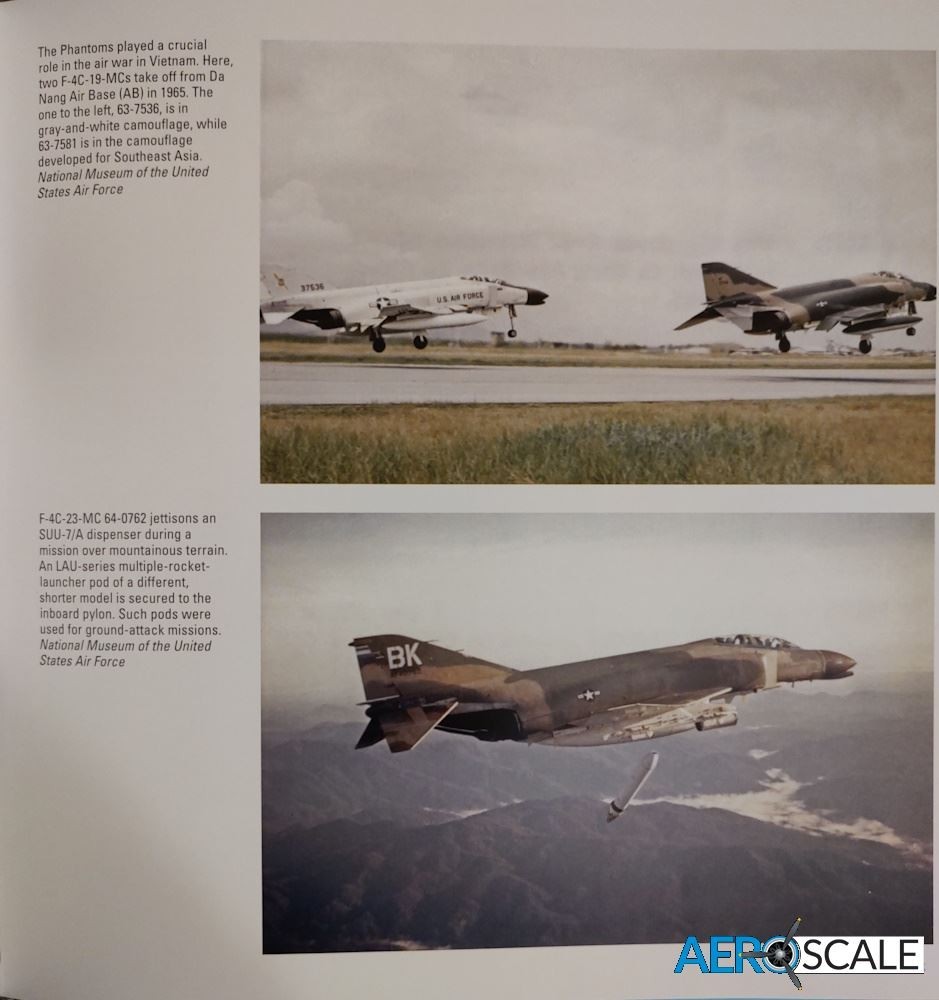
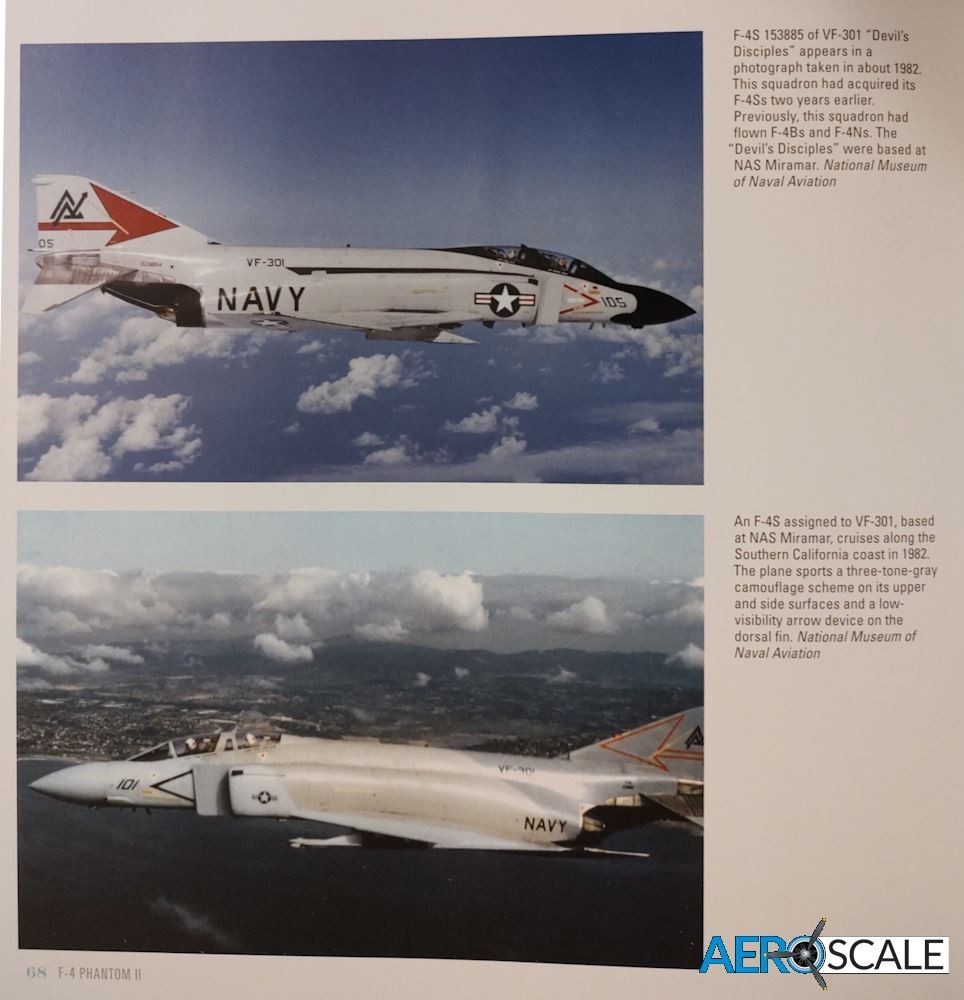
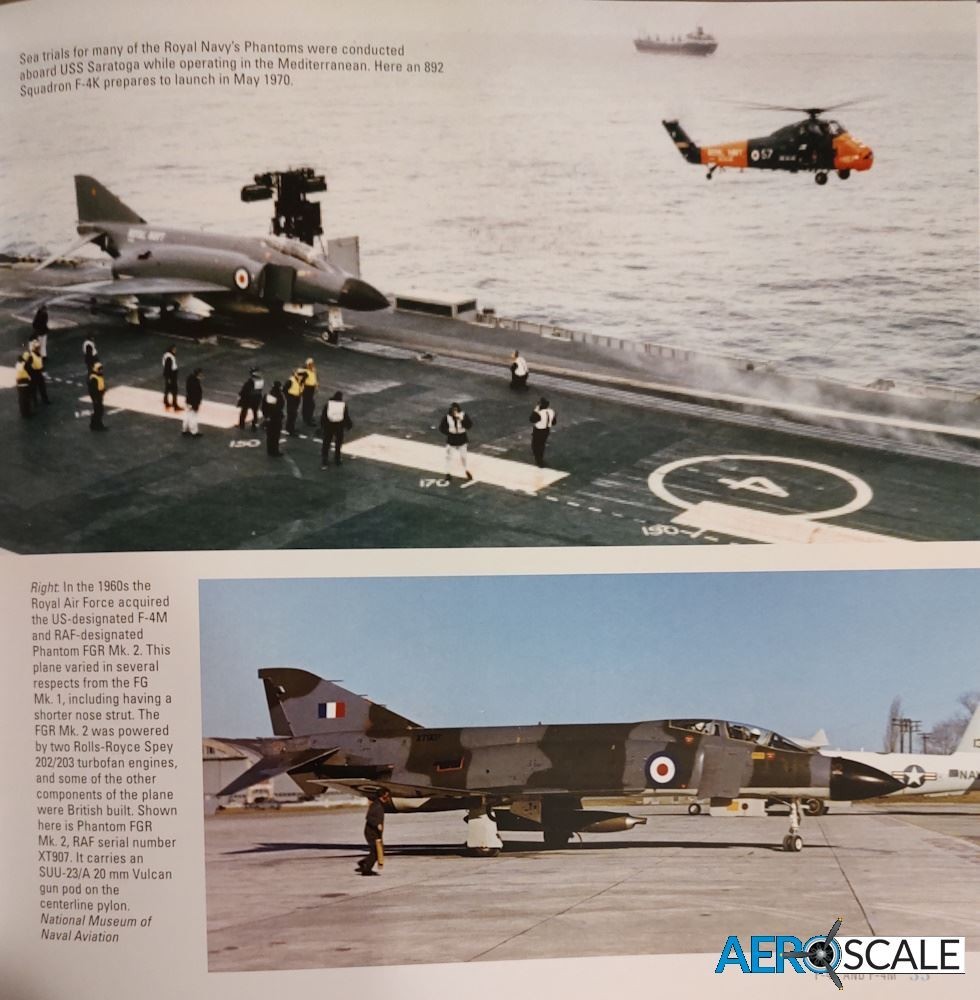
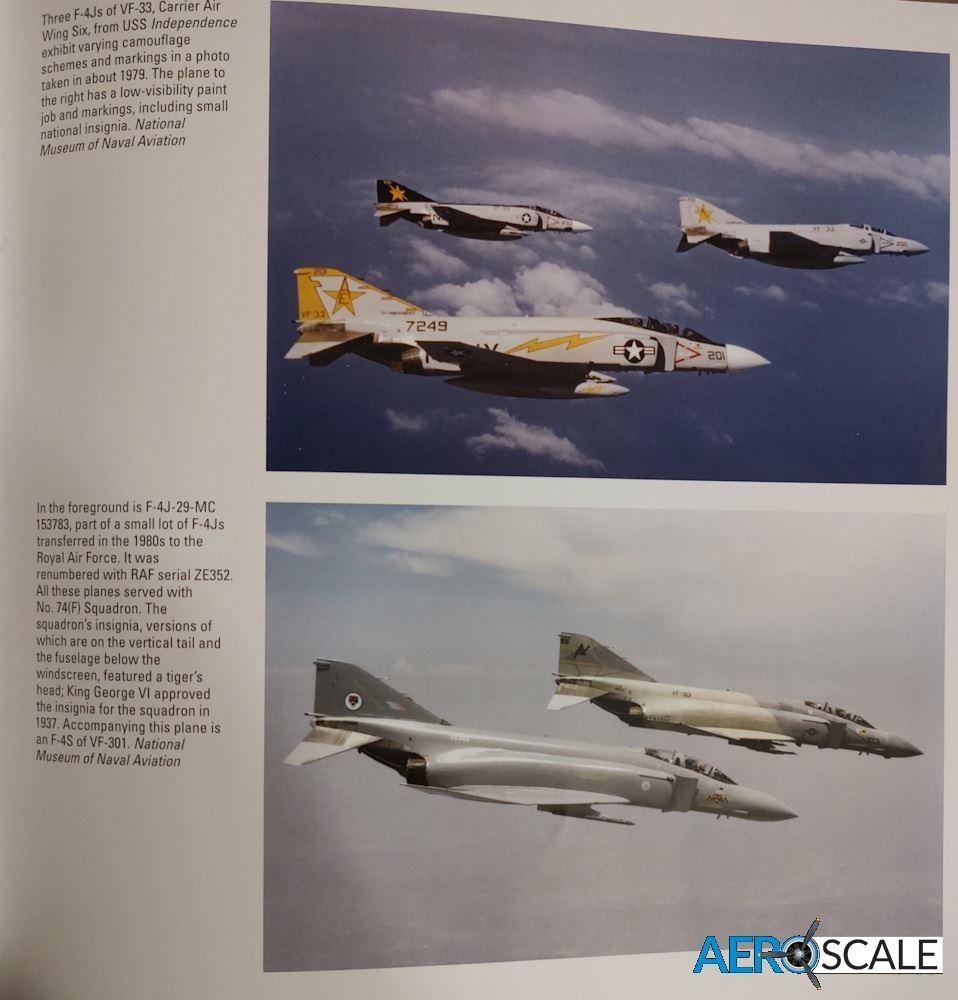
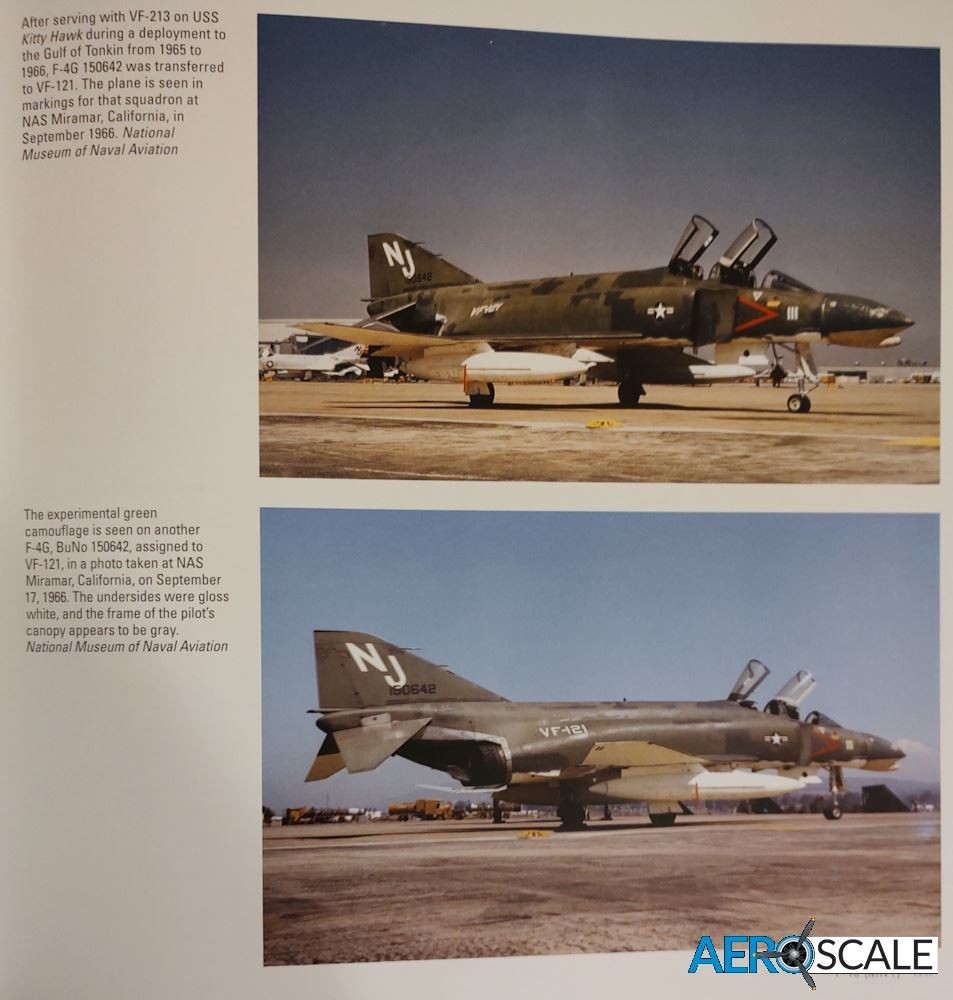
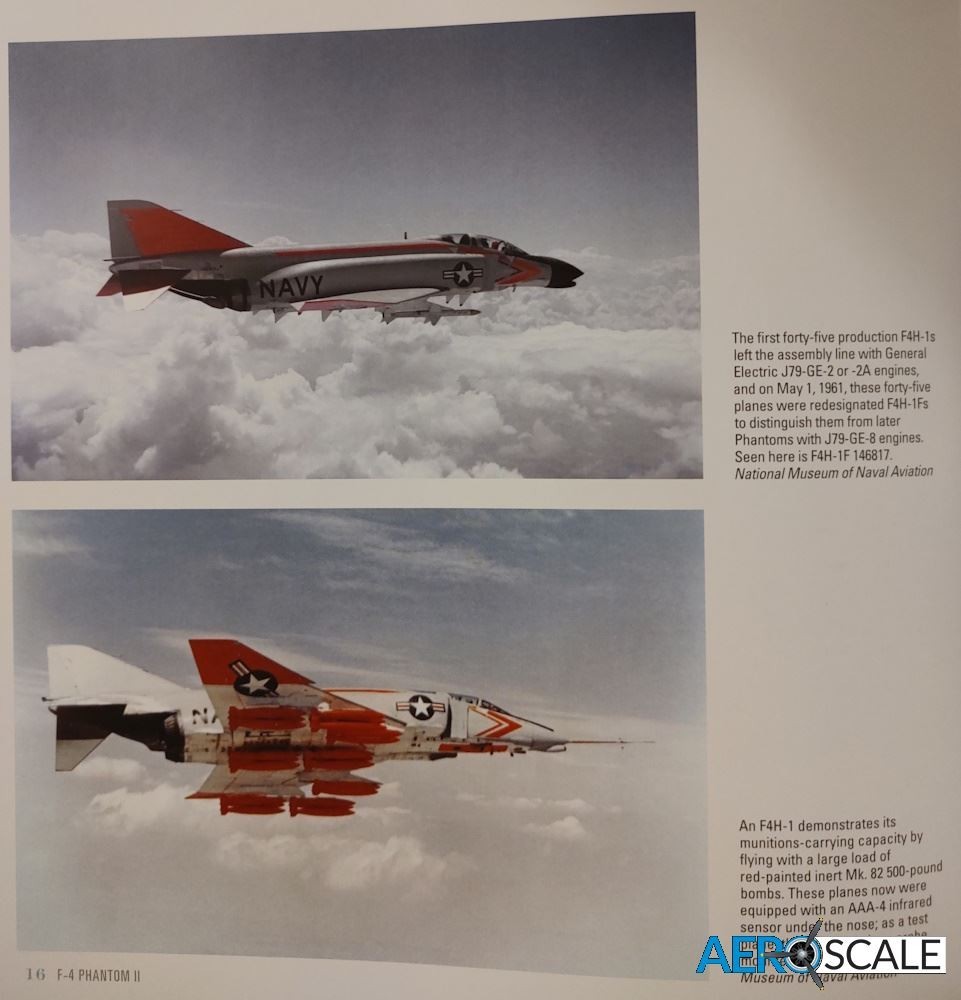
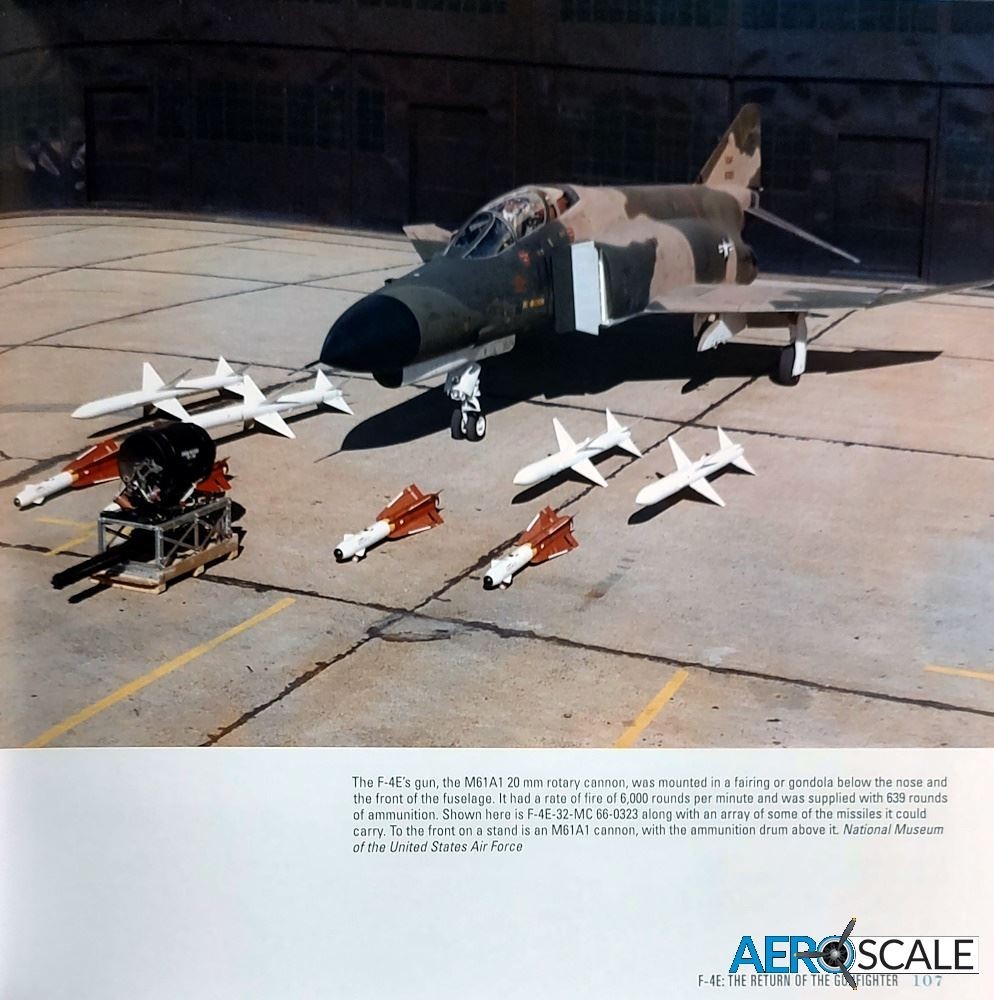
Conclusion
F-4 Phantom II, McDonnell Douglas MiG Hunter is a remarkable book those interested in the iconic fighter. Typical of David Doyle Books the text is full of valuable information and a wealth of photographs. Those qualities are supplemented by illustrations. Together, that content provides valuable source material for modelers want to understand and identify subtle and obvious differences in F-4s. I am surprised by the lack of coverage of most non-American F-4 operators, some which were significant. Legends of Warfare (Aviation) books are constrained by page count and with a subject as expansive as the F-4 Phantom II, to do the main subject justice, exclusions had to occur. While not a criticism, I wonder why a numerically minor operator like Britain is included? Perhaps because their F-4s featured some significant equipment changes whereas other countries operated relatively stock F-4s.
Regardless, once again it is obvious to me why these books are so highly valued in the modeling community. I am impressed with the content and recommend the book.
Thanks to David Doyle Books for sending this copy for review. Please remember to mention to vendor and retailers that you saw this product here - on Aeroscale.











